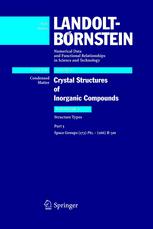

Most ebook files are in PDF format, so you can easily read them using various software such as Foxit Reader or directly on the Google Chrome browser.
Some ebook files are released by publishers in other formats such as .awz, .mobi, .epub, .fb2, etc. You may need to install specific software to read these formats on mobile/PC, such as Calibre.
Please read the tutorial at this link: https://ebookbell.com/faq
We offer FREE conversion to the popular formats you request; however, this may take some time. Therefore, right after payment, please email us, and we will try to provide the service as quickly as possible.
For some exceptional file formats or broken links (if any), please refrain from opening any disputes. Instead, email us first, and we will try to assist within a maximum of 6 hours.
EbookBell Team

4.7
26 reviewsIn the 1970s Landolt-Börnstein published a series of volumes containing crystallographic data for organic (III/5 Structure Data of Organic Crystals), intermetallic (III/6 Structure Data of Elements and Intermetallic phases) and inorganic compounds (III/7 Crystal Structure Data of Inorganic Compounds). During the 30 years that have passed, the experimental methods leading to a complete structure determination have considerably improved and the large number of crystal structures known today justifies the publication of a new compilation. The present volume will cover both intermetallic and classical inorganic compounds, a clear limit having been drawn by excluding compounds that contain C-H bonds. Whereas the earlier edition listed space group/crystal system and cell parameters for different classes of compounds, we have here chosen a different approach by grouping known crystal structures into structure types. The structure type concept is widely used among inorganic compounds, where the number of isotypic compounds can reach several hundreds. The first subvolumes will contain complete crystallographic data sets, including atom coordinates, that represent distinct structure types, whereas the last subvolumes will list cell parameters of isotypic compounds. The crystallographic data are accompanied by remarks and crystallographic features common to isotypic compounds, such as the atomic environments, a brief description of the main structural features, and drawings of selected structure types.